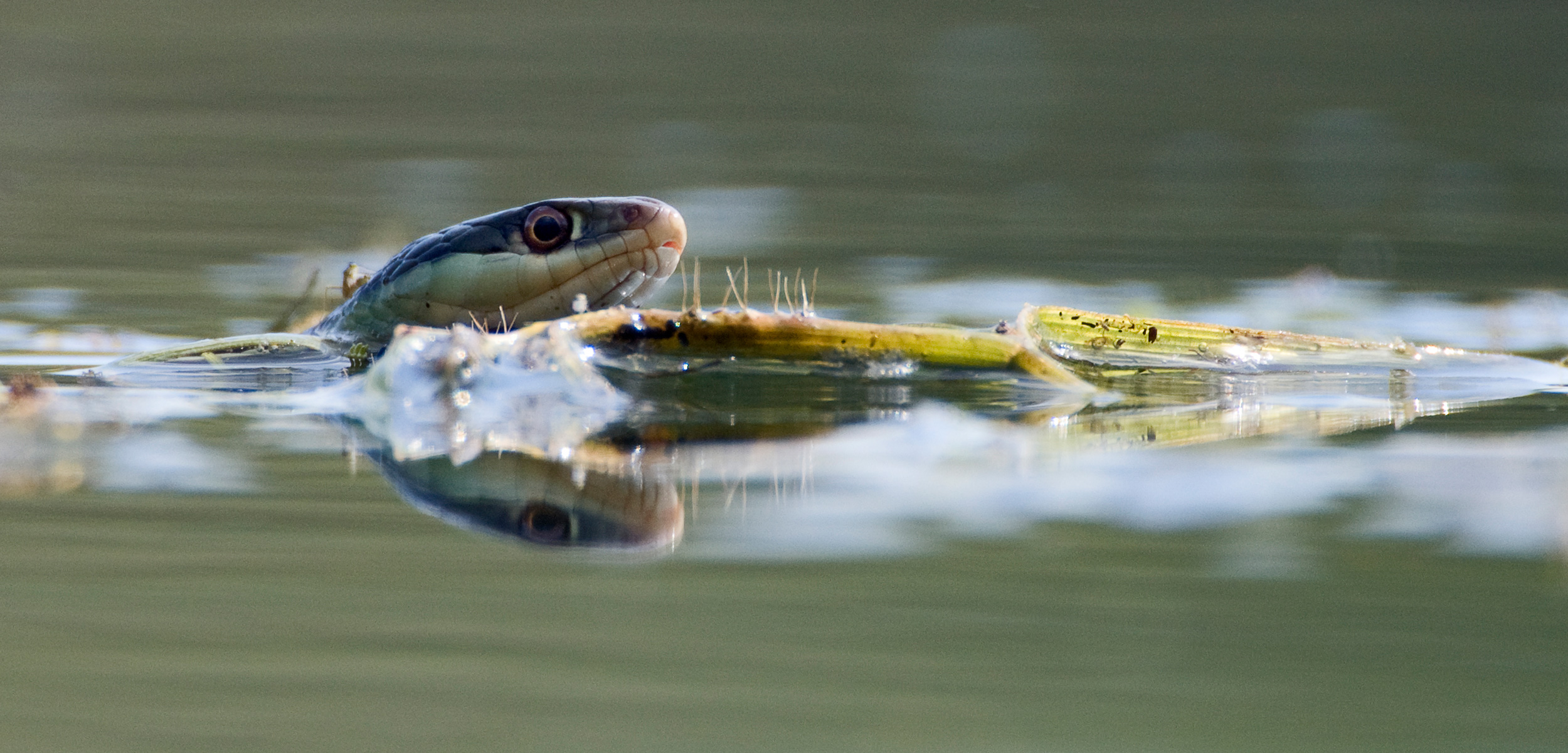Snakes That Swim with Salmon
Snakes’ wide-ranging diet and ability to slither into all manner of habitats lead to unexpected human-wildlife interactions.
Article body copy
Snakes have a long-held reputation for being sneaky. And garter snakes on the Cowichan River in southeastern Vancouver Island, British Columbia, have taken their slippery ways to new and surprising lengths.
Last spring, when Tim Kulchyski, a field biologist with the Cowichan Tribes, reached into a trap that allows researchers to count fish, he came out with a garter snake instead of the chinook and coho smolts he was expecting. And there wasn’t just one. “I probably pulled out a dozen over three weeks,” he says. “Some were pretty big. They were bloated—so healthy it was ridiculous.”
The trap, which looks like a space shuttle capsule on its side, was partially submerged near the riverbank. It’s designed so smolts migrating downstream to the Pacific Ocean enter the wide end and become trapped in an aluminum box.
Garter snakes are not great submarine predators—catching a hapless sculpin is one thing, a fast-moving salmon quite another—but, like many animals, they’re capable of exploiting a bonanza created by human technology. (Harbor seals, for instance, have used artificial bridge lighting on Vancouver Island’s Puntledge River to target smolts, and around the world, bird species ranging from swallows to cattle egrets dine on insects stirred up by farm equipment.) In this case, the trap set up a situation for the snakes to, well, hunt fish in a barrel.
Of British Columbia’s three species of garter snake, the northwestern primarily eats slugs and earthworms and avoids fish, whereas the common and western terrestrial garters enjoy a diverse diet, including fish (especially those confined in backyard ponds, hatcheries, and even tide pools). “You’d be surprised what they can pack into their mouths,” says University of Victoria biologist Patrick Gregory. “I’ve seen them eat a frog so big they couldn’t move afterwards.”
The concept of a garter snake foraging in the frigid Cowichan River in spring freshet may seem incredible, but snakes are ectotherms—their body temperature is governed by the environment. They are capable of lowering their metabolism to survive cold winters, a hibernation-like state known as brumation. A cool dip in a river may slow them down, but it won’t stop them, especially from snagging an easy meal.
The presence of garter snakes may be a minor annoyance to researchers, but one cannot help but admire their ability to sneak one over on us.

